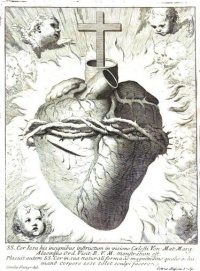Human body
From The Art and Popular Culture Encyclopedia
| Revision as of 20:43, 25 March 2024 Jahsonic (Talk | contribs) ← Previous diff |
Current revision Jahsonic (Talk | contribs) |
||
| Line 13: | Line 13: | ||
| [[Human reproduction]] takes place as internal fertilization by sexual intercourse. During this process, the [[Erectile tissue|erect]] [[penis]] of the [[male]] is inserted into the [[female]]'s [[vagina]] until the male ejaculates semen, which contains [[sperm]], into the female's vagina. The sperm then travels through the vagina and cervix into the [[uterus]] or [[fallopian tube]]s for fertilization of the [[ovum]]. | [[Human reproduction]] takes place as internal fertilization by sexual intercourse. During this process, the [[Erectile tissue|erect]] [[penis]] of the [[male]] is inserted into the [[female]]'s [[vagina]] until the male ejaculates semen, which contains [[sperm]], into the female's vagina. The sperm then travels through the vagina and cervix into the [[uterus]] or [[fallopian tube]]s for fertilization of the [[ovum]]. | ||
| - | The human [[male reproductive system]] is a series of organs located outside the body and around the [[pelvis|pelvic]] region of a male that contribute towards the [[Reproduction|reproductive]] process. The primary direct function of the male reproductive system is to provide the male [[gamete]] or [[spermatozoa]] for fertilization of the ovum. | ||
| - | |||
| - | The major reproductive organs of the male can be grouped into three categories. The first category is sperm production and storage. Production takes place in the [[testes]] which are housed in the temperature regulating [[scrotum]], immature sperm then travel to the [[epididymis]] for development and storage. The second category are the ejaculatory fluid producing glands which include the [[seminal vesicles]], [[prostate]], and the [[vas deferens]]. The final category are those used for copulation, and deposition of the [[spermatozoa]] ([[sperm]]) within the female, these include the [[penis]], [[urethra]], [[vas deferens]] and [[Cowper's gland]]. | ||
| - | |||
| - | The human [[female reproductive system]] is a series of organs primarily located inside of the body and around the [[pelvis|pelvic]] region of a [[female]] that contribute towards the [[Reproduction|reproductive]] process. The human female reproductive system contains three main parts: the [[vagina]], which acts as the receptacle for the male's sperm, the [[uterus]], which holds the developing fetus, and the [[Ovary|ovaries]], which produce the female's ova. The breasts are also an important reproductive organ during the parenting stage of reproduction. | ||
| - | |||
| - | The vagina meets the outside at the [[vulva]], which also includes the [[Labia (genitalia)|labia]], [[clitoris]] and [[urethra]]; during intercourse this area is lubricated by mucus secreted by the [[Bartholin's glands]]. The vagina is attached to the uterus through the [[cervix]], while the uterus is attached to the ovaries via the [[fallopian tube]]s. At certain intervals, typically approximately every 28 days, the ovaries release an [[ovum]], which passes through the fallopian tube into the uterus. The lining of the uterus, called the [[endometrium]], and unfertilized ova are shed each cycle through a process known as [[menstruation]]. | ||
| == See also == | == See also == | ||
Current revision
|
The first thing that presents itself to man, when he surveys himself, is his body.--Pascal |

|
Related e |
|
Featured: |
The human body is the entire structure of a human organism and comprises a head, neck, torso, two arms and two legs. By the time the human reaches adulthood, the body consists of close to 100 trillion cells, the basic unit of life. These cells are organised biologically to eventually form the whole body.
Reproductive system
Human reproduction takes place as internal fertilization by sexual intercourse. During this process, the erect penis of the male is inserted into the female's vagina until the male ejaculates semen, which contains sperm, into the female's vagina. The sperm then travels through the vagina and cervix into the uterus or fallopian tubes for fertilization of the ovum.
See also
- See Mikhail Bakhtin's concept of the grotesque body and notes on an embodied philosophy.
- Anatomical wax model
- Anatomy
- Bodily function
- Body orifices
- Body parts
- Body politics
- Body genres
- Death
- Disease
- Embodied philosophy
- Grotesque body
- Human beauty
- Human biology
- Health
- John Bell
- Orifice
- Somatopia
- Ugliness
- Vesalius
- Visceral


